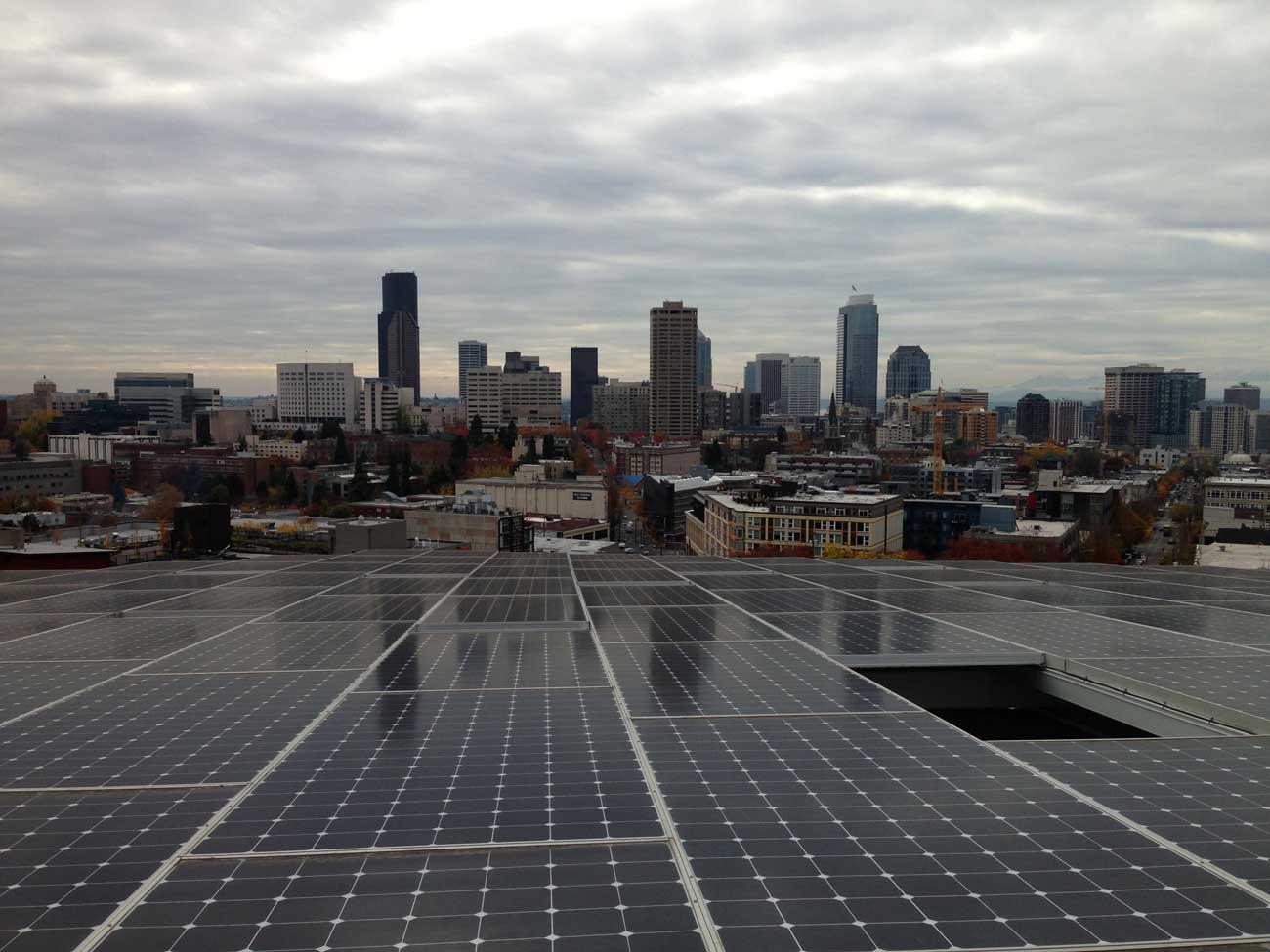Solar in Seattle and other Pacific Northwest areas is on the rise.
It’s that time of year again – the season when many of us dread opening our electricity bills. Spring may be just around the corner, but the days are still short and the temperatures low. And more artificial light and heat means higher energy bills. For some, though, painful energy bills are a thing of the past. Many homeowners are opting to install solar panels on their property to reduce or eliminate energy bills, even producing extra energy that they can sell back to the power company. And many of these people don’t live in sunny California, they’re right here in the Pacific Northwest.
How Solar Panels Work
Sunlight is absorbed by the silicon in the photovoltaic (PV) cells on the solar panel array. The electrons produced by this process creates a direct current (DC) which runs from the solar panels into an inverter, which converts the electricity into an alternating current (AC). The energy is monitored by a utility meter – any excess power created by the solar panels is fed back to the main grid, which causes the electricity meter to run backwards.
Solar Energy in the Pacific Northwest
There’s a common misconception that solar panels are strictly for the consistently sunny climates of places like Southern California and Arizona. The truth is, solar panels actually operate more efficiently in cooler climates because heat degrades electricity. In addition, sunny days where energy is being overproduced more than makeup for any overcast or rainy days. In places like the Pacific Northwest, the energy generated by our sunny summers is enough to get through the rainy winters.
“During a year’s time, an Oregon solar system will produce just as much energy as the same system installed in Florida.” – Portland General Electric
Home to our Seattle office, the Bullitt Center is a great example of a building powered by solar energy in the Northwest. And it’s not the only one. According to this post on solar at the Bullitt Center, Seattle has seen 600 installations of solar arrays in the last three years.
 The Bullitt Center boasts a solar array with an area of 14,303 sq. ft.
The Bullitt Center boasts a solar array with an area of 14,303 sq. ft.
Solar panels are becoming increasingly more popular on residential homes in the Northwest. Hammer & Hand projects in both Oregon and Washington have included solar arrays. The Karuna House in Oregon (check out this video about Karuna’s solar PV system) is one example.
Show Me the Money
It’s true that installing solar panels is not free. According to the Seattle City Light’s Guide to Installing a Solar Electric System:
Cost depends on a number of factors. Most residential systems in Seattle are 2 to 3 kilowatt (kW) systems with an average installed cost of $8,000–$10,000 per kW for a total investment of between $16,000–$30,000. The cost is typically broken down into the following four areas: PV panels, labor, inverter, and balance of system components (racking, wiring, conduit, etc. and all permits/fees).
While it may look like a hefty investment to make, it does pay off over time, increase home value when it’s time to sell, and there are cost incentives available to make the initial spend less painful. Washington and Oregon have great incentive programs for going solar.
Cost Incentives in Portland
- Net Metering customers can offset the cost of electricity they use with the energy they generate.
- Solar Payment Option customers will be paid for the power their system generates up to the total amount of electricity they use.
- Net metering customers can claim an Energy Trust financial incentive of $0.75/watt, up to a maximum of $5,000.
- The Oregon Department of Energy offers a solar tax credit of $3/watt, up to a maximum of $6,000 (a maximum of $1,500 can be claimed per year) for Net Metering customers.
- Both Net Metering and Solar Payment Option customers are eligible for a federal tax credit is available for 30% of the installed cost, after the Energy Trust incentive.
Cost Incentives in Seattle
In addition to the federal income tax credit mentioned above, there is the Washington Renewable Energy Production Incentive. This program authorizes utilities to pay the following for the electricity produced by PV systems:
- $0.15/kWh for a pV system with no “Made in Washington” components
- $0.18/kWh for a PV system with a “Made in Washington” inverter
- $0.36/kWh for a PV system with “Made in Washington” panels
- $0.54/kWh for a PV system with “Made in Washington” panels and inverter
Of course, energy production through a renewable energy source like solar is just one half of the footprint-reducing equation. Energy conservation (high performance building envelope, energy efficient fixtures, occupant behavior, etc.) is equally important. Check out this post about the importance of both energy production and conservation for net zero energy buildings, including lessons from both the Karuna House and the Bullitt Center.
Back to Field Notes